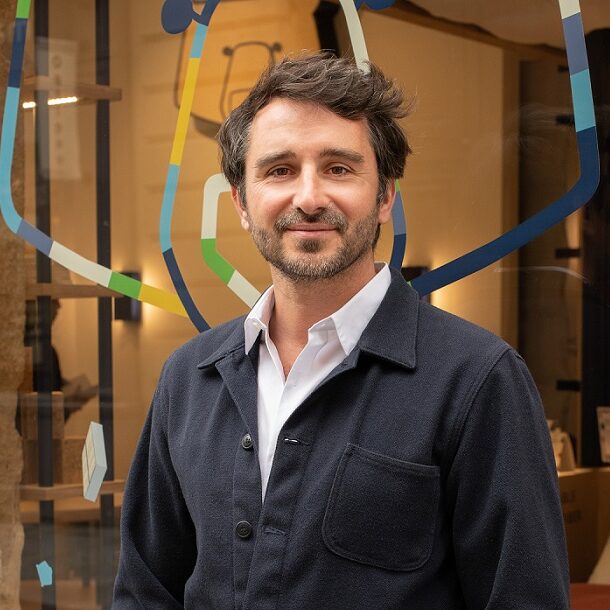When ESCP alumnus Julien Sylvain shut down his first company, Leaf Supply, he says it felt like “the sudden loss of professional identity.” For someone who had defined himself entirely through entrepreneurship, the moment was shattering personally as well.
“When you’re a trader, a blacksmith, or a marketer, you remain that even if you change companies,” he reflects. “But when you’ve always been an entrepreneur, even for a handful of years, it’s much harder to define yourself when the company no longer exists.”
Leaf Supply made portable bedding for emergency and temporary housing. Sylvain would go on to experience a second failure with Lemon Curve, an e-commerce business.
Yet from those twin disappointments ultimately emerged Tediber, the French bedding brand that has grown to €50 million in annual revenue. His story, like many of Europe’s “second-chance” entrepreneurs, highlights the growing recognition that early failure can be a crucible instead of a curse for founders willing to learn, rebuild and try again.
I think the relationship to failure is very important for entrepreneurial success. You need a good balance between powerful drivers and naivety.

Learning through loss
Sylvain’s early ventures, he admits, “didn’t go as far as we had hoped.” But it was not the financial strain that weighed heaviest; it was the identity crisis that followed.
“That pushed me to start again,” he says. “The day you quit your job, or turn one down – which was my case – to launch [a business] yourself, that’s when you accept this new part of your identity. And it’s a real relief.”
The role of failure in entrepreneurship is hardly novel. Silicon Valley long ago turned “fail fast, fail often” into a badge of honour. Yet for founders like Sylvain, failure is not celebrated for its own sake, but valued for the clarity it can produce when properly examined.
“More broadly, I think the relationship to failure is very important for entrepreneurial success,” he says. “You need a good balance between powerful drivers and naivety. Someone who doesn’t have a humbling experience, something to prove, an incredible energy to channel, or a strong message to carry will, I think, run out of steam fairly quickly.”
Equally, he adds, “it’s impossible to get into entrepreneurship without a big dose of naivety about failure. Of course, fear of failure is a driver, but if it’s too big, omnipresent, and especially if it’s the only driver, it paralyses you.”
A second act
Sylvain graduated from the ESCP Master in Management programme in 2009. By the time he launched Tediber in 2015, he was determined to learn the lessons of the past.
“They say experience is a lantern that only lights up the person who carries it,” he says. “I believe that’s true, with one condition: the only way it sheds real light is if you’re able to structure your learning along the way, so it becomes more than intuition.”
For him, one of those lessons was the value of human capital. “The people around me – employees and partners – have become increasingly important in giving me confidence,” he explains.
His co-founder, Juan Pablo, had helped him launch both Leaf Supply and Tediber, and the venture capitalist who backed Tediber also invested in Sylvain’s previous company, Lemon Curve. Several of Tediber’s first employees, who joined at the company’s launch, have also remained with the team for nearly a decade. “That continuity creates trust,” Sylvain says.
The CEO also learned to treat energy, not money, as an entrepreneur’s scarcest resource. “You need to move fast, not because time is money, but because time is energy, and energy doesn’t replenish,” he says. “Fail fast so you can iterate and succeed.”
Other lessons are more philosophical. “I listen a lot, but I think long and hard before acting,” he notes. “Do things yourself and truly understand them, get into the details. Prioritise well, and don’t confuse growth with spreading yourself too thin.”
You need to move fast, not because time is money, but because time is energy, and energy doesn’t replenish. Fail fast so you can iterate and succeed.
The stigma of failure
Investors often argue that Europe’s apparent aversion to failure stifles risk-taking when compared to Silicon Valley. Sylvain takes a more practical view. “I invest in companies, and I would largely favour a second-time entrepreneur who has failed over one who has been successful,” he says. “They usually have a much stronger drive for redemption to push things forward, compared to the comfort that comes with success.”
Personally, he says, “I didn’t really suffer from [the stigma]. But maybe that’s because I was able to carry over resources from my past experiences: the same VC, the same co-founders, for example.”
Leading after loss
Today, Tediber employs around 80 people and sits comfortably in the sweet spot between a start-up’s agility and a mid-sized company’s stability. “I still feel much more like an entrepreneur than a manager,” Sylvain says. “The size of Tediber fits what I think is my ideal environment, especially since we have so many projects, which makes me feel like I’m truly still building.”
Experience has made him pragmatic, even sceptical of overconfidence. “When it comes to hiring, I’ve realised you should be wary of those who ‘know,’ and that you actually learn a lot from those who doubt what they know,” he says.
Knowing when to stop
For first-time founders facing a business collapse, Sylvain offers measured advice: “Don’t miss the moment for taking stock,” he says. “Why did you really fail, without hiding behind ‘the market’ or unfairness? What would you do better if you were starting over? Where were you strong? What gave you the most joy, and the most sleepless nights?”
For him, reflection sits between failure and renewal. “You have to find the zone where you’re good, where you feel the most joy, and where you have the most impact,” he says.
And for all the scars of the journey, he remains unabashedly optimistic about starting over. “Isn’t setting off on a new adventure the best way to truly feel alive?”
License and Republishing
The Choice - Republishing rules
We publish under a Creative Commons license with the following characteristics Attribution/Sharealike.
- You may not make any changes to the articles published on our site, except for dates, locations (according to the news, if necessary), and your editorial policy. The content must be reproduced and represented by the licensee as published by The Choice, without any cuts, additions, insertions, reductions, alterations or any other modifications.If changes are planned in the text, they must be made in agreement with the author before publication.
- Please make sure to cite the authors of the articles, ideally at the beginning of your republication.
- It is mandatory to cite The Choice and include a link to its homepage or the URL of thearticle. Insertion of The Choice’s logo is highly recommended.
- The sale of our articles in a separate way, in their entirety or in extracts, is not allowed , but you can publish them on pages including advertisements.
- Please request permission before republishing any of the images or pictures contained in our articles. Some of them are not available for republishing without authorization and payment. Please check the terms available in the image caption. However, it is possible to remove images or pictures used by The Choice or replace them with your own.
- Systematic and/or complete republication of the articles and content available on The Choice is prohibited.
- Republishing The Choice articles on a site whose access is entirely available by payment or by subscription is prohibited.
- For websites where access to digital content is restricted by a paywall, republication of The Choice articles, in their entirety, must be on the open access portion of those sites.
- The Choice reserves the right to enter into separate written agreements for the republication of its articles, under the non-exclusive Creative Commons licenses and with the permission of the authors. Please contact The Choice if you are interested at contact@the-choice.org.
Individual cases
Extracts: It is recommended that after republishing the first few lines or a paragraph of an article, you indicate "The entire article is available on ESCP’s media, The Choice" with a link to the article.
Citations: Citations of articles written by authors from The Choice should include a link to the URL of the authors’ article.
Translations: Translations may be considered modifications under The Choice's Creative Commons license, therefore these are not permitted without the approval of the article's author.
Modifications: Modifications are not permitted under the Creative Commons license of The Choice. However, authors may be contacted for authorization, prior to any publication, where a modification is planned. Without express consent, The Choice is not bound by any changes made to its content when republished.
Authorized connections / copyright assignment forms: Their use is not necessary as long as the republishing rules of this article are respected.
Print: The Choice articles can be republished according to the rules mentioned above, without the need to include the view counter and links in a printed version.
If you choose this option, please send an image of the republished article to The Choice team so that the author can review it.
Podcasts and videos: Videos and podcasts whose copyrights belong to The Choice are also under a Creative Commons license. Therefore, the same republishing rules apply to them.





